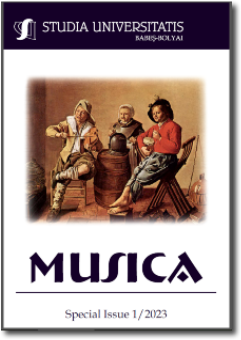THE QUESTION OF THE MUSICAL MESSAGE. THE SEMANTIC CAPACITY OF THE EXPRESSIVE STRUCTURE
THE QUESTION OF THE MUSICAL MESSAGE. THE SEMANTIC CAPACITY OF THE EXPRESSIVE STRUCTURE
Author(s): Oleg GarazSubject(s): Music, Semantics
Published by: Studia Universitatis Babes-Bolyai
Keywords: message; communication; language; connotation; symbol; process; music;
Summary/Abstract: Is it possible to communicate through music? Does the music communicate something in particular? Is music like the message in a bottle – the meaning wrapped in the envelope of a form? Who would be the recipient of the „musical message” in this case – one, many, all of humanity, as in the IV parts of Beethoven’s Ninth Symphony? Or maybe just Captain Grant’s children? And how pertinent is the extrapolation of notional-discursive schema and logic to music as Mattheson did in Der Vollkommene Kapellmeister? Because this phrase – the message of music – immediately refers to both the „suggestive” neutrality of musical sounds and the „emotional” irrelevance of the relationships between them. Sounds are just sounds. Is a chord the analogy of the word, the melody the analogy of the phrase, and a whole articulation the substitute of a speech? Is music a language? Or, indeed, being both sonorous, but also processual and symbolic, just like spoken language, music does not connote in the same way. And if the language has prescribed references, then music does not. A chord, a melody, let alone a counterpoint, have no predetermined meaning, not even one resembling a notional one, even after the performance is over. Should the composer first be a very good connoisseur of human emotional behavior rather than a very good musician? Or, perhaps, a simple postman, as in the famous song of the Beatles?
Journal: Studia Universitatis Babes-Bolyai - Musica
- Issue Year: 68/2023
- Issue No: Sp.Issue 1
- Page Range: 69-84
- Page Count: 16
- Language: English

